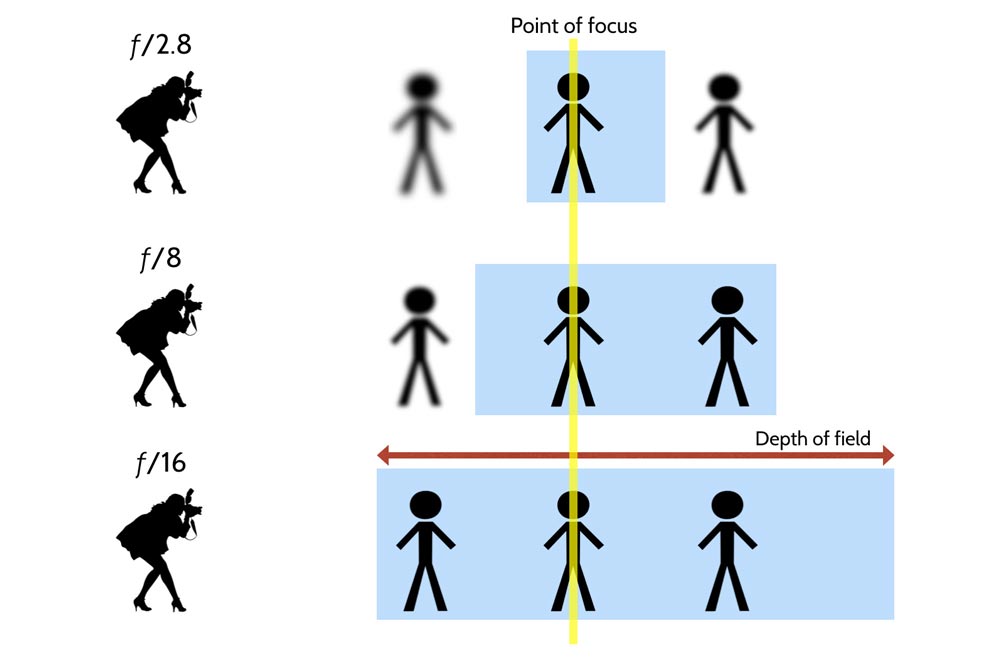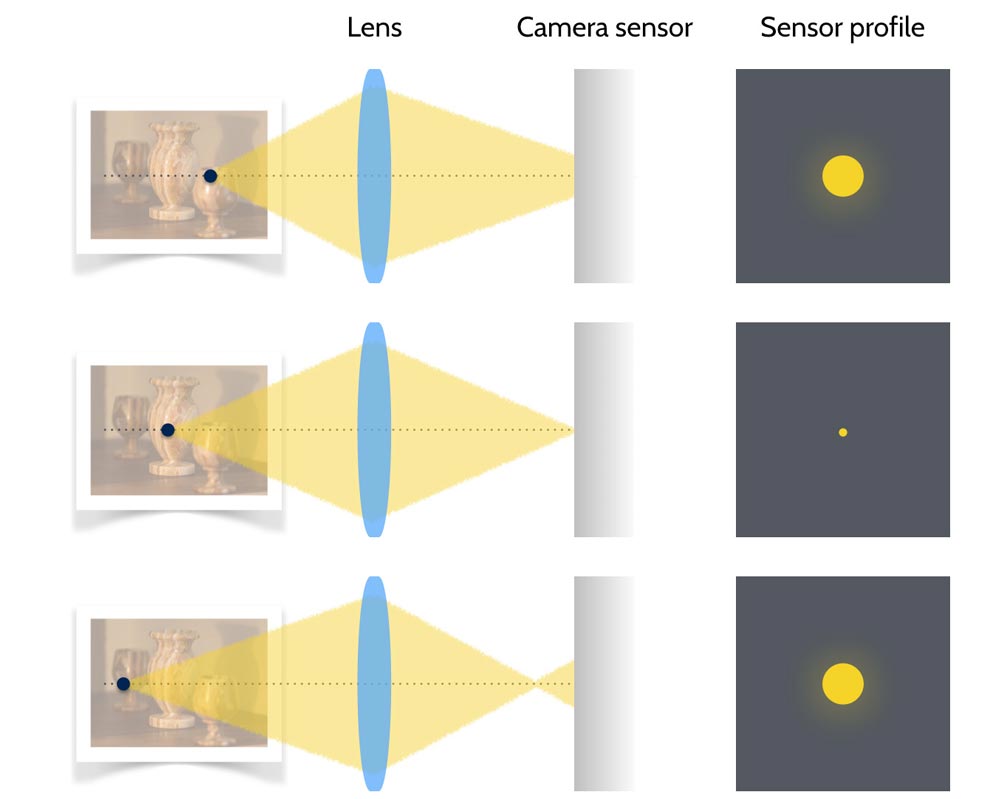Depth of field refers to the distance behind and in front of the point of focus that appears acceptably sharp. This distance is inversely proportional to the aperture, as illustrated below.
And demonstrated in photographs…

- camera type (sensor size)
- aperture
- focal length
- print size
- viewing distance from the final image.
To get an idea of this concept of the circle of confusion, take a look at the image of the vase and two cups below.
Clearly the cups are out-of-focus, leading the viewer’s eye straight towards the vase in the middle. This diagram shows how the light falls on the camera sensor.
For the cups in both the foreground and background, the light imprint on the sensor is clearly bigger than the circle of confusion as both objects are out of focus. But as we stop the lens down, like in the photographs at the top of the article we would see the cups gradually creep into focus until all three items are sharp to the viewer.


